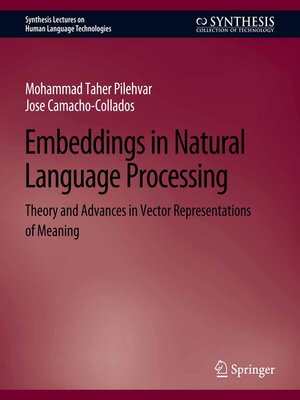Embeddings in Natural Language Processing
ebook ∣ Theory and Advances in Vector Representations of Meaning · Synthesis Lectures on Human Language Technologies
By Mohammad Taher Pilehvar

Sign up to save your library
With an OverDrive account, you can save your favorite libraries for at-a-glance information about availability. Find out more about OverDrive accounts.
Find this title in Libby, the library reading app by OverDrive.



Search for a digital library with this title
Title found at these libraries:
| Library Name | Distance |
|---|---|
| Loading... |
Embeddings have undoubtedly been one of the most influential research areas in Natural Language Processing (NLP). Encoding information into a low-dimensional vector representation, which is easily integrable in modern machine learning models, has played a central role in the development of NLP. Embedding techniques initially focused on words, but the attention soon started to shift to other forms: from graph structures, such as knowledge bases, to other types of textual content, such as sentences and documents. This book provides a high-level synthesis of the main embedding techniques in NLP, in the broad sense. The book starts by explaining conventional word vector space models and word embeddings (e.g., Word2Vec and GloVe) and then moves to other types of embeddings, such as word sense, sentence and document, and graph embeddings. The book also provides an overview of recent developments in contextualized representations (e.g., ELMo and BERT) and explains their potential in NLP. Throughout the book, the reader can find both essential information for understanding a certain topic from scratch and a broad overview of the most successful techniques developed in the literature.







